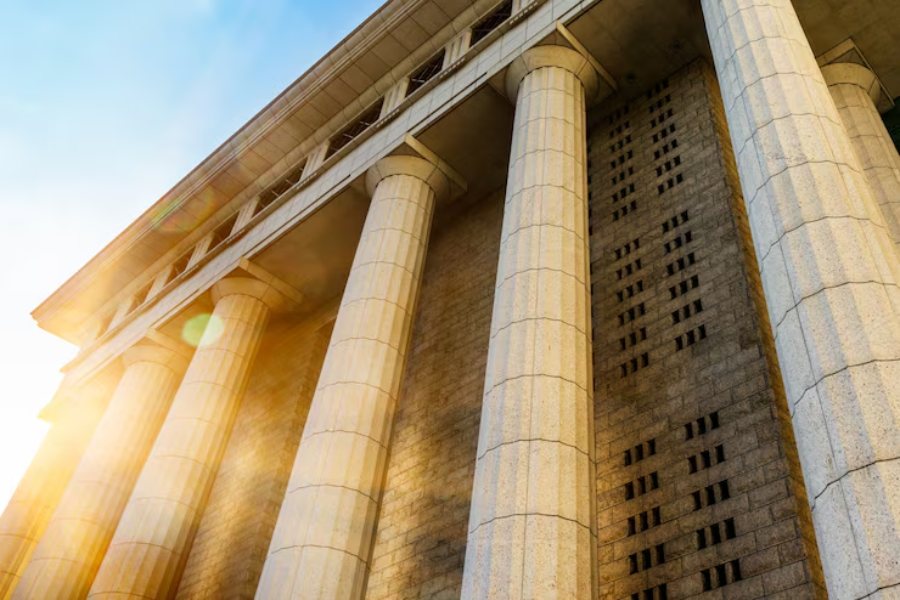Is the judicial branch the Supreme Court? While the judicial branch is not solely limited to the Supreme Court, this highest court plays a crucial role in holding judicial power in the United States. Judicial power is vested in the courts, with the Supreme Court holding the ultimate authority over constitutional interpretation. The judicial branch ensures that laws and executive actions comply with the Constitution, playing a vital role in maintaining the balance of power between the three branches of government.
Through judicial review, the courts can declare laws unconstitutional and check the powers of both the legislative and executive branches. While the judicial branch includes other courts, the Supreme Court is the final authority on constitutional issues. In this article, we will examine who holds judicial power, the relationship between the judiciary and the Supreme Court, and the critical role it plays in upholding the Constitution.
Is the judicial branch the Supreme Court?
While the judicial branch includes lower courts and appellate courts, the Supreme Court holds the ultimate judicial power in the U.S. It interprets constitutional law and has the final say in legal disputes, making it the most powerful court. The judicial branch, including the Supreme Court, ensures that laws passed by Congress and actions taken by the executive comply with constitutional principles, protecting individual rights and maintaining the balance of power.
The Role of Judicial Power in U.S. Law and Governance
The judicial branch in the United States is responsible for ensuring that the laws and actions of the legislative and executive branches align with the Constitution. While judicial power is vested in all courts, the Supreme Court holds the highest authority. It plays a critical role in upholding the rule of law and ensuring constitutional compliance through judicial review. By reviewing laws and actions, the judiciary serves as a check on the power of other government branches.
The role of the judiciary goes beyond merely applying laws to individual cases. It involves interpreting laws, safeguarding constitutional rights, and ensuring that all government actions remain consistent with constitutional principles. Although lower courts are essential in resolving legal disputes, the Supreme Court holds the ultimate authority in matters of constitutional interpretation. Its decisions set important legal precedents that guide future rulings and influence the broader application of U.S. law.
As the highest court in the land, the Supreme Court has the authority to interpret the Constitution. Through judicial review, it influences both public policy and societal norms, establishing itself as one of the most powerful institutions in American governance.
How the Judicial Branch Upholds Checks and Balances?
Judicial power plays a crucial role in the U.S. system of checks and balances, designed to prevent any branch of government from becoming too powerful. The judicial branch acts as a check on both the legislative and executive branches, ensuring that their laws and actions comply with the Constitution. This balance is vital for upholding the rule of law and protecting individual rights.
Judicial Review and Its Role in Checks and Balances
One of the primary mechanisms through which the judicial branch enforces checks and balances is judicial review. This power allows courts to declare laws or executive actions unconstitutional, effectively limiting the power of the legislative and executive branches. Judicial review ensures that the judiciary can examine and evaluate the actions of Congress and the President, maintaining a necessary balance of power while protecting constitutional rights.
The Separation of Powers
The separation of powers principle is essential in ensuring that no branch of government oversteps its boundaries. By keeping judicial power separate from the legislative and executive branches, the judiciary plays a vital role in preventing abuses of power. This separation ensures that the government operates within constitutional limits, preserving democracy and safeguarding citizens’ rights.
Who Holds Judicial Power? A Look at the Courts
While the Supreme Court holds the highest authority in the U.S., the judicial branch includes numerous lower courts that hold significant judicial power. These courts are essential in interpreting laws, resolving disputes, and ensuring that government actions adhere to constitutional principles.
- The U.S. Supreme Court’s Role: The Supreme Court is the highest in the U.S. and has the final say in interpreting the Constitution. Through judicial review, it plays a key role in shaping U.S. law. Its decisions influence public policy and societal norms, establishing it as one of the most powerful institutions in American governance. Similar to how Time in America helps clarify time zone differences, the Supreme Court defines the boundaries of government power through its constitutional rulings.
- Lower Courts and Judicial Power: District courts, appellate courts, and other lower courts also hold significant judicial power. They interpret statutes, resolve legal disputes, and ensure that laws align with constitutional principles. Although crucial in shaping U.S. law, their authority is ultimately limited by the Supreme Court’s rulings.
Judicial Power in Landmark Supreme Court Cases
Landmark cases provide clear examples of how judicial power influences U.S. law, demonstrating the Supreme Court’s crucial role in interpreting the Constitution and determining the limits of legal and governmental actions.
- Judicial Power in Action: Landmark Cases. Cases like Brown v. Board of Education (1954) and Roe v. Wade (1973) exemplify the power of judicial review in driving legal and social change. These rulings reshaped American law by extending civil rights protections and challenging discriminatory practices. In Brown v. Board of Education, the Court declared racial segregation in public schools unconstitutional. At the same time, Roe v. Wade recognized a woman’s right to choose an abortion, significantly influencing societal norms.
- The Role of Judicial Power in Shaping Policy: Judicial decisions, especially those made by the Supreme Court, can directly impact public policy and influence legislative actions. Through judicial review, the judiciary ensures that laws and executive actions comply with constitutional principles, and in some cases, court rulings prompt legislative changes to align with the Court’s interpretations.
The Future of Judicial Power in the U.S.
The future of judicial power in the U.S. will be shaped by emerging societal issues such as civil rights, technology, and environmental protections. As the nation evolves, the Supreme Court will play an increasingly essential role in interpreting the Constitution to address modern challenges. The judiciary’s responsibility is to adapt the Constitution to contemporary societal needs, ensuring that it remains a relevant guiding document in the face of changing times.
Adapting to Changing Societal Issues
As new issues arise, the Supreme Court will be tasked with interpreting the Constitution to reflect modern challenges. Whether it’s technology, civil rights, or environmental concerns, the Court will continue to address these topics while preserving the fundamental principles outlined in the Constitution.
Maintaining Judicial Independence
As public opinion shifts, maintaining the independence of the judiciary becomes even more critical. The Supreme Court will continue to ensure that judicial power remains separate from political influence, safeguarding individuals’ rights and determining the limits of government power.
Conclusion
While the judicial branch includes lower courts, the Supreme Court holds the highest judicial power in the U.S. It is responsible for interpreting the Constitution and exercising judicial review, ensuring that laws and actions comply with constitutional principles. The Supreme Court plays a critical role in shaping U.S. law and providing checks and balances against overreach by the legislative and executive branches. As society evolves, the Supreme Court, at the helm of the judicial branch, will remain essential in protecting individual rights and upholding a fair and balanced legal system, ensuring that the Constitution continues to serve the needs of a changing nation.
FAQ’s
Who holds judicial power in the U.S.?
Judicial power is held by the judicial branch, including the Supreme Court and lower courts, which interpret and apply laws in accordance with the Constitution.
What is the role of the Supreme Court in judicial power?
The Supreme Court holds the highest judicial authority, interpreting the Constitution and ensuring that laws passed by Congress and actions taken by the President comply with constitutional principles.
How does judicial power affect the legislative process?
Through judicial review, the judiciary ensures that legislative actions comply with the Constitution. The Supreme Court can declare laws unconstitutional, influencing the legislative process.
What is judicial review?
Judicial review is the process by which courts, especially the Supreme Court, evaluate laws and executive actions to ensure they are constitutional. This is a key aspect of judicial power.
Why is the Supreme Court important in U.S. governance?
The Supreme Court plays a crucial role in interpreting the Constitution and ensuring that laws and government actions align with constitutional principles, maintaining the balance of power within the U.S. government.
Robert Stewart is a seasoned law blog writer with a passion for translating complex legal concepts into accessible, informative content. With a keen eye for detail and a knack for storytelling, Robert crafts engaging articles that educate and empower readers in the realm of law.
Drawing upon his extensive experience in the legal field, Robert brings a wealth of knowledge to his writing, covering a diverse range of topics including personal injury, family law, criminal defense, and more. His articles combine thorough research with clear, concise language, making them valuable resources for both legal professionals and laypeople alike.


